Alexander Nevsky: Grand Prince Of Novgorod, Skilled Fighter, Quick–Thinking Strategist Who Defeated Swedish And German Invaders
Angela Sutherland - AncientPages.com - The Russian national hero, Alexander Yaroslavich “Nevski” (1220-1263), was a younger son of Yaroslav, Prince of the Russian province of Vladimir, located about 200 kilometers (120 mi) to the east of Moscow, Russia.m
He is a legend today: his fame survived in form of his name on streets, various ships, public buildings and a number of stories passed down from one generation to another.
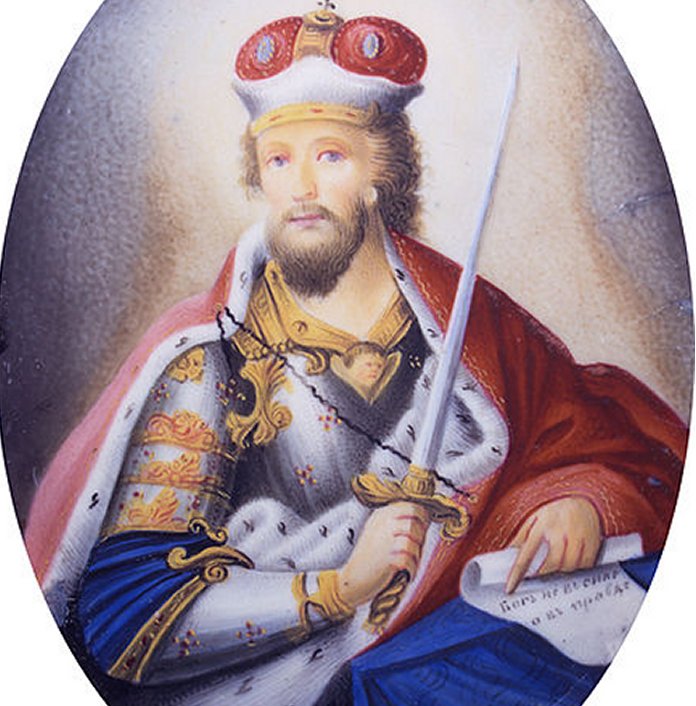
Medallion of the Grand Prince St Alexander Nevsky. Russian School, late 19th, early 20th century. Image credit: Wikipedia
From Tales of the Life and Courage of the Pious and Great Prince Alexander found in the Second Pskovian Chronicle (1260–1280), we learn about this young man:
"By the will of God, Prince Alexander was born from the charitable, people-loving, and meek the Great Prince Yaroslav, and his mother was Theodosia. As it was told by the prophet Isaiah: 'Thus sayeth the Lord: I appoint the princes because they are sacred and I direct them…'
"... He was taller than others and his voice reached the people as a trumpet, and his face was like the face of Joseph, whom the Egyptian Pharaoh placed as next to the king after him of Egypt. His power was a part of the power of Samson and God gave him the wisdom of Solomon ... this Prince Alexander: he used to defeat but was never defeated ..."
Nevsky’s victory over the Swedes and German Knights was frequently invoked as propaganda during Soviet tough resistance to the German invasion in World War II. Alexander Nevsky has always inspired the Russian people.
In 1236, Alexander was a very young man when he was appointed prince and ruler of Novgorod, the prosperous center of trade in the region of the Baltic Sea.
Novgorod was wealthy and so powerful that it was called ‘Lord Novgorod the Great'. However, compared to the greatest commercial centers like Constantinople, Samarkand or Venice, every northern city (even Novgorod) was small and rather poor. Still, to the merchants from Northern Europe, Novgorod was big and impressive enough.
Alexander excelled early as a skilled fighter and quick-thinking strategist; however, at the beginning of his political career, his diplomatic rather than military skills were used to protect Novgorod, as the Mongols were on their way to extend their already vast empire in 1238–40.
Battle Of The Neva River And Nickname ‘Nevsky’
According to the 14th century ‘Novgorod Chronicle’, in the summer of 1240, the Swedish forces along with Norwegians, Finns, and Tavastians (a modern subgroup of the modern Finnish people) reached the River Neva under the leadership of Birger Magnusson (1210-1266) and began building of a fortress on the River Neva.
They intended to march towards present-day St. Petersburg. Their work, however, was stopped by Prince Alexander of Novgorod and his army, who attacked the Swedes on July 15, 1240.

The envoys of the Roman Pope attend Alexander Nevsky. ( Sketch for the mural of the Cathedral of Christ the Savior in Moscow). Henryk Siemiradzki (1843–1902). Image via Wikipedia
They clashed together, and despite the fact that the Russian army was smaller in number, they succeeded in defeating the Swedes, who withdrew on their ships from the Novgorod’s territory.
His success prevented these countries from continuing their expansion in Russian territory. After this victory, Alexander got his nickname "Nevski" - from the River Neva".
Stronger Military Test For Prince Alexander
He faced a stronger test two years later when the Roman Catholic Teutonic Knights, were on their way across Eastern Europe, to convert pagans to the Christian faith, or to kill them. By 1241, much of Novgorod’s territory was also in their hands. It happened when Alexander was in exile (despite his victory on the River Neva in 1240) due to troublesome political disputes in Novgorod.
Authorities recalled Nevsky to face the danger from the Livonian Order (a branch of the Teutonic Knights) and in 1241, he gathered an army.
Final Battle On Frozen Lake Peipus
As it was estimated, the crusader forces likely numbered around 2,600, including 800 Danish and German knights, 100 Teutonic knights, 300 Danes, 400 Germans, and 1,000 Estonian infantry. The Russians had around 5,000 men. Nevsky and his brother Andrei's bodyguards in the number of around 1,000, plus 2000 militia of Novgorod, 600 horse archers, and 1400 Finno-Ugrian tribesmen.
Alexander and his men faced the heavy cavalry of the enemy on the ice of Lake Peipus in Estonia on April 5, 1242.
He defeated the invaders and this battle is known today as the Battle of the Ice. His army mostly consisted of foot soldiers with bows or pikes, accustomed to moving over ice. The Germans did not feel safe on Peipus’ frozen surface and Nevsky wore the Germans down in hand-to-hand combat.

Alexander Nevsky ice battle on the Lake Peipus, between Estonia and Russia. It was an important, decisive Novgorod victory. Germans lost all territorial claims over Russian land. Image source: Wikipedia
In “Teutonic Knights”, Urban William writes:
“…The [Russians] had many archers, and the battle began with their bold assault on the king’s men [Danes]. The brothers’ banners were soon flying in the midst of the archers, and swords were heard cutting helmets apart. Many from both sides fell dead on the grass. Then the Brothers’ army was completely surrounded, for the Russians had so many troops that there were easily sixty men for every one German knight. The Brothers fought well enough, but they were nonetheless cut down…”
Roman Pope On One Side And The Golden Horde On The Other
He dismissed the envoys of the Roman Pope and their attempts to cause war between Russia and the Golden Horde because he understood the uselessness of such war at a time when they were still a powerful force.
Nevsky was an excellent diplomat, a far-sighted and cautious politician in difficult times of medieval Europe, full of diverse conflicts, which were both complex and very serious.
He understood perfectly that he was completely dependent on the Golden Horde in his actions. There was no way to prevent the Mongols from entering the kingdom during the 1250s. Many were surprised at how Alexander received the potential enemies from the east. Instead of fighting, he immediately put himself under their rule.
Fighting The Golden Horde Would Be A Pointless Decision
Obviously, he did not believe he had a chance to win over such an enemy. The Russian people, after much bloodshed, would be enslaved, and the wealth of the country looted. Now, he could act as a mediator and avoid violent military confrontations.
Historians still seem to be uncertain about Nevsky’s behavior when it came to his relations with the Mongols. He may have thought that Catholicism was a much more real threat to Russian national identity than paying a tribute to the Khan, who had little interest in Slav religion and culture.
Alexander was installed as the Grand Prince of Vladimir (i.e., the supreme Russian ruler) in 1252. He died on November 14, 1263. Prior to his death, he took monastic vows and was given the religious name of Alexis.
He was canonized in 1547 and received his own feast day on September 12. In 1725, Catherine I of Russia founded the Alexander Nevsky Order.
Written by – A. Sutherland - AncientPages.com Senior Staff Writer
Copyright © AncientPages.com All rights reserved. This material may not be published, broadcast, rewritten or redistributed in whole or part without the express written permission of AncientPages.com
Expand for referencesReferences:
Urban, W. Teutonic Knights
Ben McCool B.Guevara M. Nevsky Hero of the People
More From Ancient Pages
-
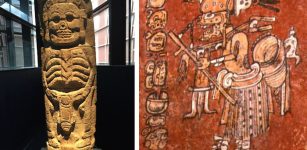 Ah Puch: Evil Death God Of Underworld Who Hated Souls In Maya Beliefs
Featured Stories | Feb 16, 2018
Ah Puch: Evil Death God Of Underworld Who Hated Souls In Maya Beliefs
Featured Stories | Feb 16, 2018 -
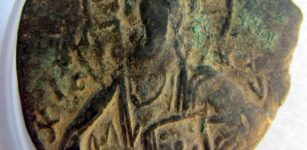 A 1,000-Year-Old Bronze Coin Accidentally Discovered By A Little Boy
Archaeology | Mar 12, 2020
A 1,000-Year-Old Bronze Coin Accidentally Discovered By A Little Boy
Archaeology | Mar 12, 2020 -
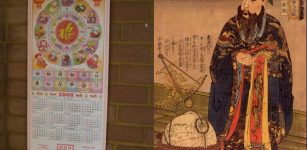 Ancient Chinese Tai Chu Calendar Was Defined By Emperor Han Wu
Ancient History Facts | Jun 3, 2019
Ancient Chinese Tai Chu Calendar Was Defined By Emperor Han Wu
Ancient History Facts | Jun 3, 2019 -
 8000-Year-Old Prehistoric Çatalhöyük: Residents Were Buried In Their Homes
Archaeology | May 1, 2020
8000-Year-Old Prehistoric Çatalhöyük: Residents Were Buried In Their Homes
Archaeology | May 1, 2020 -
 10 Ancient Celtic Symbols Explained
Ancient Symbols | Sep 9, 2023
10 Ancient Celtic Symbols Explained
Ancient Symbols | Sep 9, 2023 -
 Rare Viking Artifacts Hidden Beneath The Ice Discovered By Archaeologists In Norway
Archaeology | Feb 6, 2021
Rare Viking Artifacts Hidden Beneath The Ice Discovered By Archaeologists In Norway
Archaeology | Feb 6, 2021 -
 Two Giant Limestone Sphinxes Of Pharaoh Amenhotep III And A Statue Of Goddess Sekhmet Discovered In Luxor
Archaeology | Aug 11, 2022
Two Giant Limestone Sphinxes Of Pharaoh Amenhotep III And A Statue Of Goddess Sekhmet Discovered In Luxor
Archaeology | Aug 11, 2022 -
 ‘Masters Of The Desert’ – Hohokam People, Massive Caliche Structures And Sophisticated Extensive Irrigation Canals
Civilizations | May 31, 2016
‘Masters Of The Desert’ – Hohokam People, Massive Caliche Structures And Sophisticated Extensive Irrigation Canals
Civilizations | May 31, 2016 -
 Mask Of Shame: Worn In Ancient Times As Punishment For Gossiping
Ancient History Facts | Jan 5, 2017
Mask Of Shame: Worn In Ancient Times As Punishment For Gossiping
Ancient History Facts | Jan 5, 2017 -
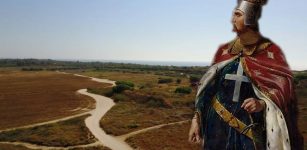 Battle Of Arsuf – Site Where King Lionheart And The Crusaders Defeated Saladin – Found
Archaeology | Aug 1, 2020
Battle Of Arsuf – Site Where King Lionheart And The Crusaders Defeated Saladin – Found
Archaeology | Aug 1, 2020 -
 Largest Collection Of Ancient “Cup-Marked” Rocks Ever Found In Scotland
Civilizations | Nov 23, 2018
Largest Collection Of Ancient “Cup-Marked” Rocks Ever Found In Scotland
Civilizations | Nov 23, 2018 -
 16 Dead Sea Scrolls Fragments Are Forgeries – U.S. Bible Museum Says
Artifacts | Mar 15, 2020
16 Dead Sea Scrolls Fragments Are Forgeries – U.S. Bible Museum Says
Artifacts | Mar 15, 2020 -
 The Knap Of Howar: One Of The Oldest And Well-Preserved Neolithic Complexes Orkney, Scotland
Featured Stories | Mar 2, 2017
The Knap Of Howar: One Of The Oldest And Well-Preserved Neolithic Complexes Orkney, Scotland
Featured Stories | Mar 2, 2017 -
 On This Day In History: Army Of Tsar Alexander I Of Russia Enters Paris – On March 31, 1814
News | Mar 31, 2016
On This Day In History: Army Of Tsar Alexander I Of Russia Enters Paris – On March 31, 1814
News | Mar 31, 2016 -
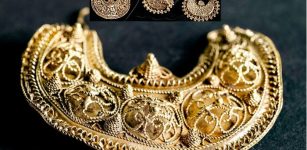 Unique 1,000-Year-Old Medieval Golden Treasure Unearthed By Dutch Historian Using Metal Detector
Archaeology | Mar 24, 2023
Unique 1,000-Year-Old Medieval Golden Treasure Unearthed By Dutch Historian Using Metal Detector
Archaeology | Mar 24, 2023 -
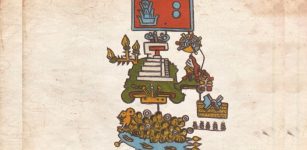 Pictograms: First Written Accounts Of Earthquakes In Pre-Hispanic Mexico
Archaeology | Aug 27, 2021
Pictograms: First Written Accounts Of Earthquakes In Pre-Hispanic Mexico
Archaeology | Aug 27, 2021 -
 Secret Tunnel Leads To Christian Chapel In Ancient Suomela Monastery In Turkey
Archaeology | Dec 27, 2017
Secret Tunnel Leads To Christian Chapel In Ancient Suomela Monastery In Turkey
Archaeology | Dec 27, 2017 -
 Underwater Ancient Cypress Forest Offers Clues To The Past
Archaeology | Jun 29, 2021
Underwater Ancient Cypress Forest Offers Clues To The Past
Archaeology | Jun 29, 2021 -
 Famous Runestone Is Not What We Thought And Re-Writes History Of The Vikings – Scholar Argues
Vikings | Jan 23, 2025
Famous Runestone Is Not What We Thought And Re-Writes History Of The Vikings – Scholar Argues
Vikings | Jan 23, 2025 -
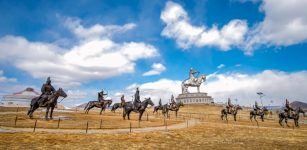 Mongol Empire: Rise And Fall Of One The World’s Largest And Fearsome Empires
Featured Stories | Mar 26, 2021
Mongol Empire: Rise And Fall Of One The World’s Largest And Fearsome Empires
Featured Stories | Mar 26, 2021
